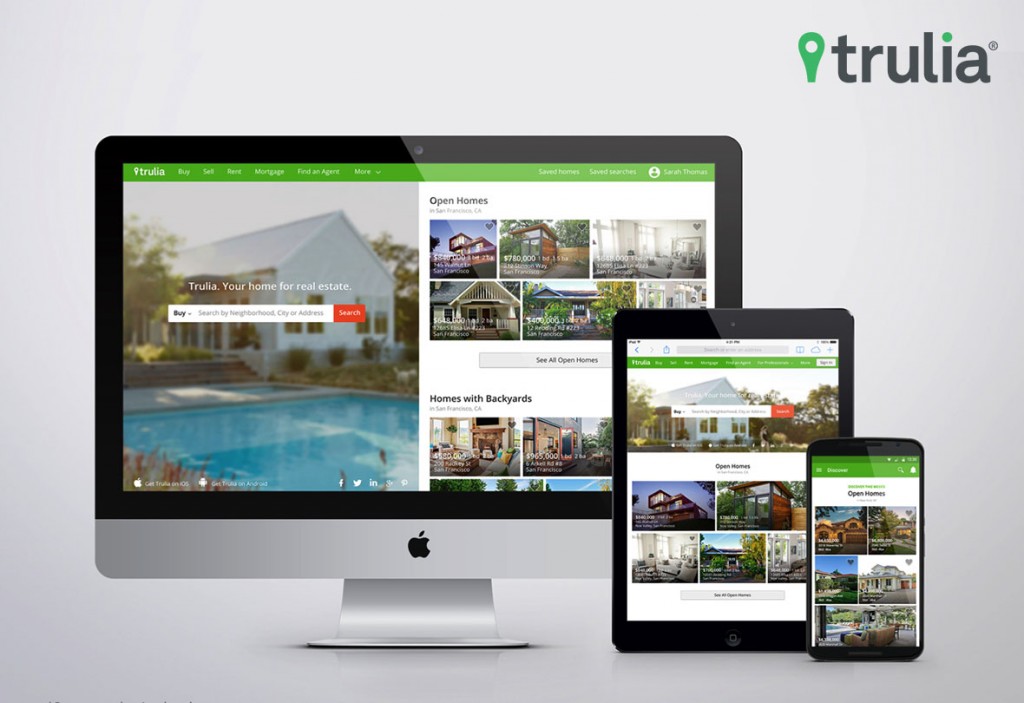At Trulia, our number one focus is to make finding a home easy and enjoyable. Creating amazing experiences for consumers is at the forefront of all our product development, as is innovating for the various platforms they care about.
While the traditional Web is still critical in a multiplatform company’s consumer journey, like that of Trulia’s, companies need to be looking at it as part of a larger product system that ties content together from many channels. And, yes, we all love having consumers visit our traditional desktop websites, but we cannot ignore the other platforms they’re adopting and using every day. Which is why, at Trulia, we focus on several different consumer acquisition channels and attempt to ensure we are optimized for all in order to deliver a favorable experience.
When a consumer visits your site, your number one priority – outside of delivering an optimal experience – is to keep them coming back. You can of course do that through email registration, but email alone isn’t going to be enough to keep consumers coming back.
The Key to Email Success? Investing in Mobile Web
Odds are high that when a consumer opens their first email from your company, it’ll happen on a mobile device. And since clicking out from that email into your desktop Web experience is almost guaranteed to cause abandonment, it’s critical to have an amazing mWeb experience.
How you achieve that experience varies, and I see benefits in both dedicated code bases and responsive design. In Trulia’s case, we use both, but strive to keep core content as similar as possible across both mWeb and traditional Web. For more complex interactions such as search, we use dedicated mobile code, while we use responsive design for content such as blogs. Dedicated code allows us more flexibility for how content updates and how the experience animates. However, as CSS and JavaScript frameworks continue to evolve, we’ll be looking to use responsive design more to aid in code maintenance.
Navigating The Path from mWeb to App
Once consumers are engaging with your mWeb experience, companies often take the opportunity to shove an interstitial on the screen, encouraging the consumer to download the app. While this strategy can be effective, at Trulia, we find that consumers want to evaluate the mWeb experience first before deciding to download an app. So, we place emphasis on designing and creating an enjoyable mWeb experience.
Once the consumer is ready to download your app, take full advantage of that through deep linking and push notifications. Deep linking allows you to connect the consumer directly into the proper view of your app, straight from a Web link within an email. This creates a much better experience for the consumer; generally, app users show higher engagement so it’s the ideal place for them to land.
With iOS9, deep linking into your apps has become much easier, but this requires alignment with special content on your website as Apple needs to verify the content there. You can check Apple’s documentation on Universal Links for more details on this. With Android, it’s also straightforward to use intent filters. A filter can intercept an email click on a phone, and translate that into an intent to drop the consumer into viewing the content in the app. Again, search the Android developers site for examples on this.
The Power of Push
Finally, there is the beloved push notification. More powerful than email, but also more personal, it’s important to treat push notifications differently. While your emails may use a template to make them appear personalized, it’s imperative any push notification you send is based on truly personalized data. Similar to that first time Web experience, you get one shot at notifications before the consumer disables them, so put in the effort to ensure these are meaningful messages that will resonate.
To maximize your ability to connect with consumers as repeat visitors, it’s critical you think through how all your platforms fit together and that you ensure they embrace today’s consumer behavior. We’ve spent significant time on this flow at Trulia, and our consumers respond by both demonstrating positive engagement and high product satisfaction when surveyed.
*This post originally appeared on CIOReview.com.


